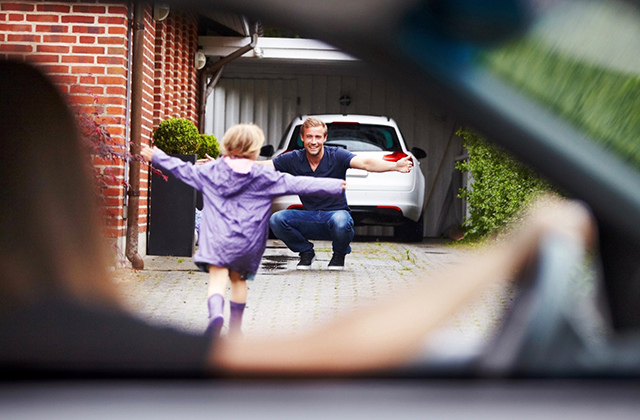How to Install Your Own Salt Pool Chlorinator System
As with many new technologies, the mystery surrounding saltwater pools has quickly given way to general acceptance and the do-it-yourself crowd has said, “That looks like something I can do myself!” Fortunately, they are correct and people with basic home-handy skills are converting their pools to salt in record numbers, and saving a great deal of money in the process. This article may help you decide if this project is a good fit for you. Today pool removal Sydney is different and more whether we work in a confined place of underground area.
The process of converting a standard chlorine pool to a salt water pool is quite simple and revolves around the installation of a chlorine generator. Remarkably, the pool industry has yet to form a consensus on what to call this category of equipment. Some call them chlorine generators but some refer to them as salt chlorinators. Others still call them saline systems or simply salt pool systems. In some parts of the world, they are known as electrolyzers. They are all the same thing, a device that breaks down salt molecules and releases sanitizer into the pool water. Universally, they have two major components; a power supply and a generating “cell” that the water passes through. On one component or the other, a control allows the user to regulate the amount of sanitizer delivered. Beyond these basics, various brands have an array of differences, mostly in the electronics and in the design of the cell.
Sophisticated salt chlorinators have digital circuitry programmed to monitor the salinity and temperature of the water and provide self-regulated power to the cell. The displays make it easy for the pool owner to know that the unit is functioning normally and provide alerts when it’s time to add more salt. The circuits also apply power to the cell in a way that maximizes cell life. Moreover, modern units all have circuitry that minimizes the need to clean the cell and they work at low salinity levels that are generally safe for all modern pool equipment and finishes. Although the troublesome stories still resonate in some corners, the old days of salt brine tanks with high salinity levers have gone the way of floppy disks. Today’s salt pool systems work with pool water that is less salty than the solution we wash our contacts in. You can’t taste it and you don’t notice anything but a soft sensation to the water. The point is, all of your existing pool equipment is fine. Don’t throw anything away!
Step one to installing your salt chlorinator is probably already done; Make certain that your pool water is balanced. Dust off the test kit and check the PH, Total Alk, and Hardness. If needed, make some adjustments.
Next, add the salt directly to the pool. Depending on your manufacturer, this will require from 30 to 40 pounds of pure salt, per 1000 gallons of water! If you don’t know how many gallons of water are in your pool, you must do the math…there is no “standard size.” For rectangular pools, it’s easy to multiply the average length X average width X average depth and then multiply times 7.5. For other shapes, there are many online resources that provide various formulas. Pool salt is available everywhere these days. All the home improvement centers, hardware stores, and some big box stores have it. You may also use water softener salt but steer away from any that have additives such as rust inhibitors. If you find food grade salt, make certain it is not iodized. Don’t be intimidated if it seems like you are adding a lot of salt to the pool. You have a lot of water and it’s only a teaspoon per gallon. Within several hours of dumping the salt over the side, it will dissolve, never to be seen again!
Now, you are ready to install the equipment; the cell and the control module. There are some installation differences between brands but basically, the plumbing job and electrical hookup are the same. It’s all simple stuff but it’s not a BBQ grill so read the instructions before cutting into anything.
I recommend starting with the plumbing. The position of the cell will be dictated largely by the location of your filter, heater, and control valves and in the next step, you will locate the power module so that the “cell cord” reaches the cell. This electric connection between the power supply and the cell is usually soldered in place and has a proprietary plug so there is no extending it. Most in-ground pools use 2″ plumbing but some are 1.5″ so figure out what you have before driving to the store. Some brands of chlorine generators are made to work with both sizes but if needed, you can buy adaptors, known as bushings. Locate the pipe that leads from the filter (or heater if you have one) and identify a section of pipe that will allow you to plumb in the cell. In most cases, you will be eliminating the plastic chlorine tablet dispenser and installing the cell in its place. Use whatever number of couplings or elbows necessary to route the water through the cell and then back to the return pipe. Having said that, try to minimize the complexity of the route and keep back pressure to a minimum. Also, when possible, provide around eight inches of straight pipe between all turns, for the same reason. Lastly, use additional pipe if necessary to raise the height of the cell for easy inspection and service. (Or go buy a pair of good knee-pads.) I won’t go into the details of gluing PVC pipe because it’s easy and most people have done it before. If this is your first time, there are some good videos via Google and the rest. I do recommend using good quality cement such as Gorilla PVC Glue or Red Hot Medium Duty PVC Cement. Dry fit everything first and be certain that it’s going to work out before gluing to the actual cell fittings. Pay attention to the direction of the water flow through the cell. With some brands it matters and with others, it does not. All good chlorine generator cells come with threaded unions so that once the cell is glued in, you can remove it easily without cutting pipe. Lastly, some brands have a flow switch that must also be plumbed in. Installing this backwards will guarantee that your unit never comes on, so again, pay attention to the direction of the water flow.
The next step is simply mounting the control module (power supply) in a spot that is easy for you to get to and also within reach of the electric cord that feeds power to the cell. In most cases, this is on the wall next to your timer or pump switch and the package will include the hardware need for this attachment. In some cases, it may be necessary to install a post for mounting the control so that every thing reaches.
The final step is connecting AC power to the unit and while many if not most do-it-yourselfers find this an easy thing, I would caution you to call an electrician if you are not totally comfortable working with electricity. A few brands offer units with plugs that simply plug into an available GFCI outlet. Most brands are made to be hardwired but could also easily be converted to the plug in variety with a $4 plug from the hardware store. Except in the Deep South and parts of Florida, most pool equipment is set up to run on 220 volts and most salt chlorinators default to this voltage. If you only have 110v at the equipment pad, speak with your vendor before ordering your system. Most will gladly set it up for 110v before shipping and save you the trouble of converting it. A description of the electrical codes that may apply to the hookup of any pool equipment is outside the scope of this article but suffice to say that they are there for a reason. You want equipment that is properly grounded and connected in a way that will not be compromised by weather or a child that tugs on a hanging wire. Do it right or not at all and call a licensed electrician if you are unsure of anything.
When everything is connected, turn on your pump and wait for the system to pressurize, checking everywhere for leaks. Once you are happy with your plumbing job, turn on the salt chlorinator and follow the set up instructions.
Congratulations. You now have a salt pool! Give your left over chlorine tablets to your brother-in-law so he can save up for his own chlorine generator. Good job!
This information provided by Don Uhle, President of Pace Research Ltd. in Houston, Texas. With his brother Ken Uhle, Don heads up PoolBids, the original web-based connection for homeowners and reputable swimming pool builders. Since 1997, PoolBids has helped over ten thousand homeowners in their quest for the ideal backyard pool and maintains a network of over 200 pre-screened pool builders throughout the continental United States. Their sister company, Discount Salt Pool, provides specialized pool equipment to pool builders and directly to the public via the website http://www.discountsaltpool.com. With a line up that includes all popular brands, Discount Salt Pool provides conversion kits, parts, and lot’s of free advice. Call them with your questions anytime at 866-766-5243.
Article Source: http://EzineArticles.com/expert/Donald_Uhle_Jr./821824
Article Source: http://EzineArticles.com/5533712

